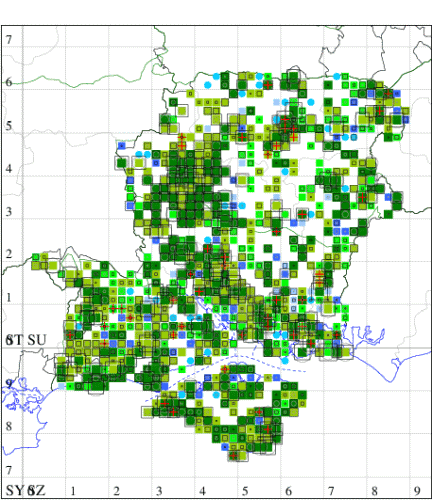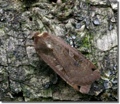Large Yellow Underwing
Noctua pronuba
Checklist Number73.342 [B&F: 2107]
Verification
Record will be accepted (subject to date and location checks)
Common often abundant, in a wide range of habitats, including grassland, gardens, woodland and moorland throughout the British Isles. Widespread and extremely common in Hampshire and on the Isle of Wight. Wingspan 50-60 mm. Although variable, with a number of distinct forms, Large Yellow Underwing is usually unmistakable, although a pitfall for the unwary is the assignment of occasional small specimens to the extremely rare and declining Lunar Yellow Underwing N. orbona — both share a small black apical streak, but Large Yellow Underwing lacks the diagnostic black discal spot in the hindwing, which can be seen by gently lifting up the forewing with forceps. Larva feeds various grasses and herbaceous plants.


The abundance in each month is indicated as follows:
 No records
No records Very occasional
Very occasional Irregular
Irregular Uncommon
Uncommon Off-peak, but not unusual
Off-peak, but not unusual Off-peak, but not unusual
Off-peak, but not unusual Main flight time
Main flight time| J | F | M | A | M | J | J | A | S | O | N | D | |
|---|---|---|---|---|---|---|---|---|---|---|---|---|
| Adult |  |  |  |  |  |  |  |  |  |  |  |  |
| Larval |  |  |  |  |  |  |  |  |  |  |  |  |
()(IMG_5636).jpg)




()(IMG_5636).jpg)